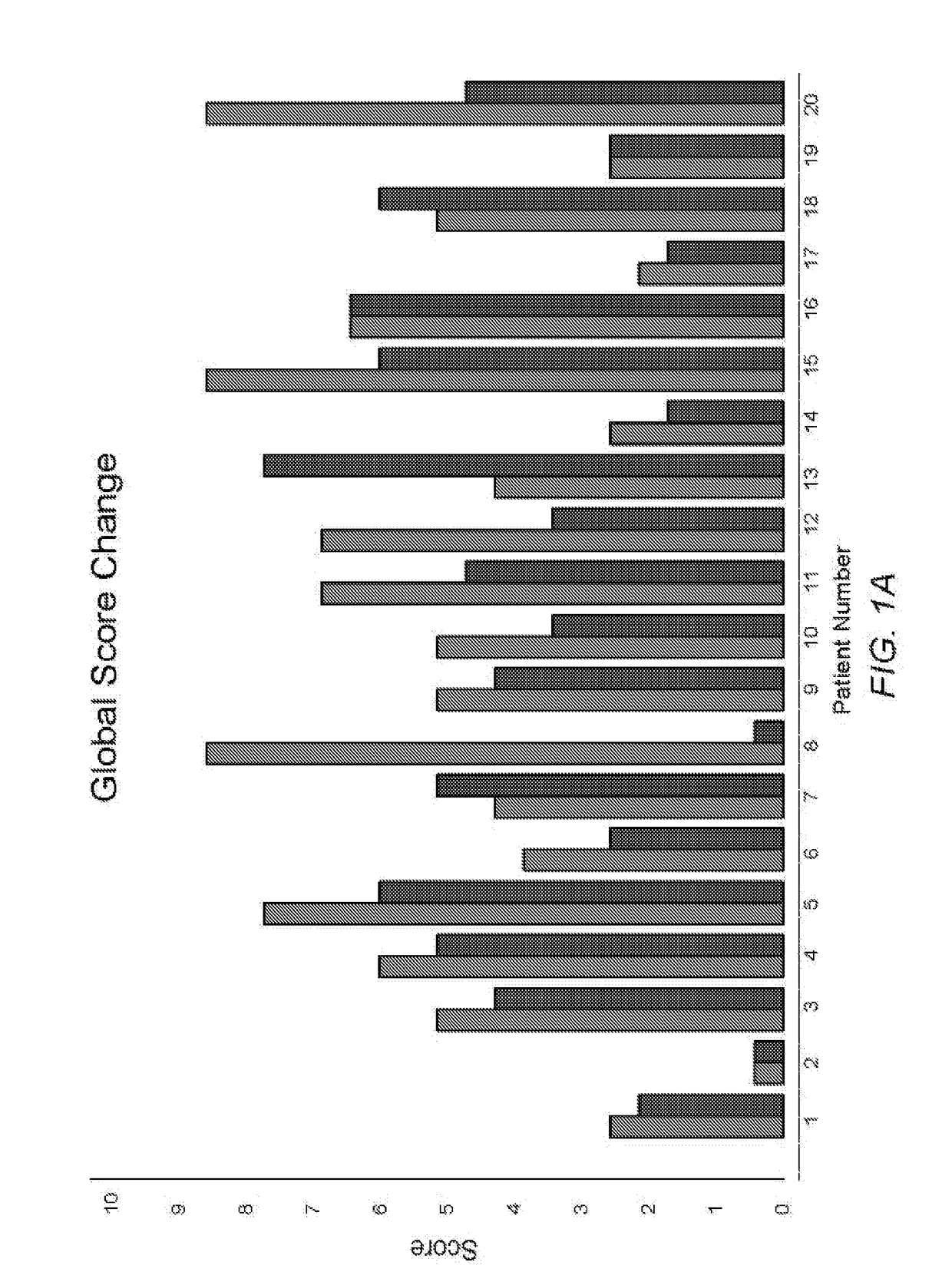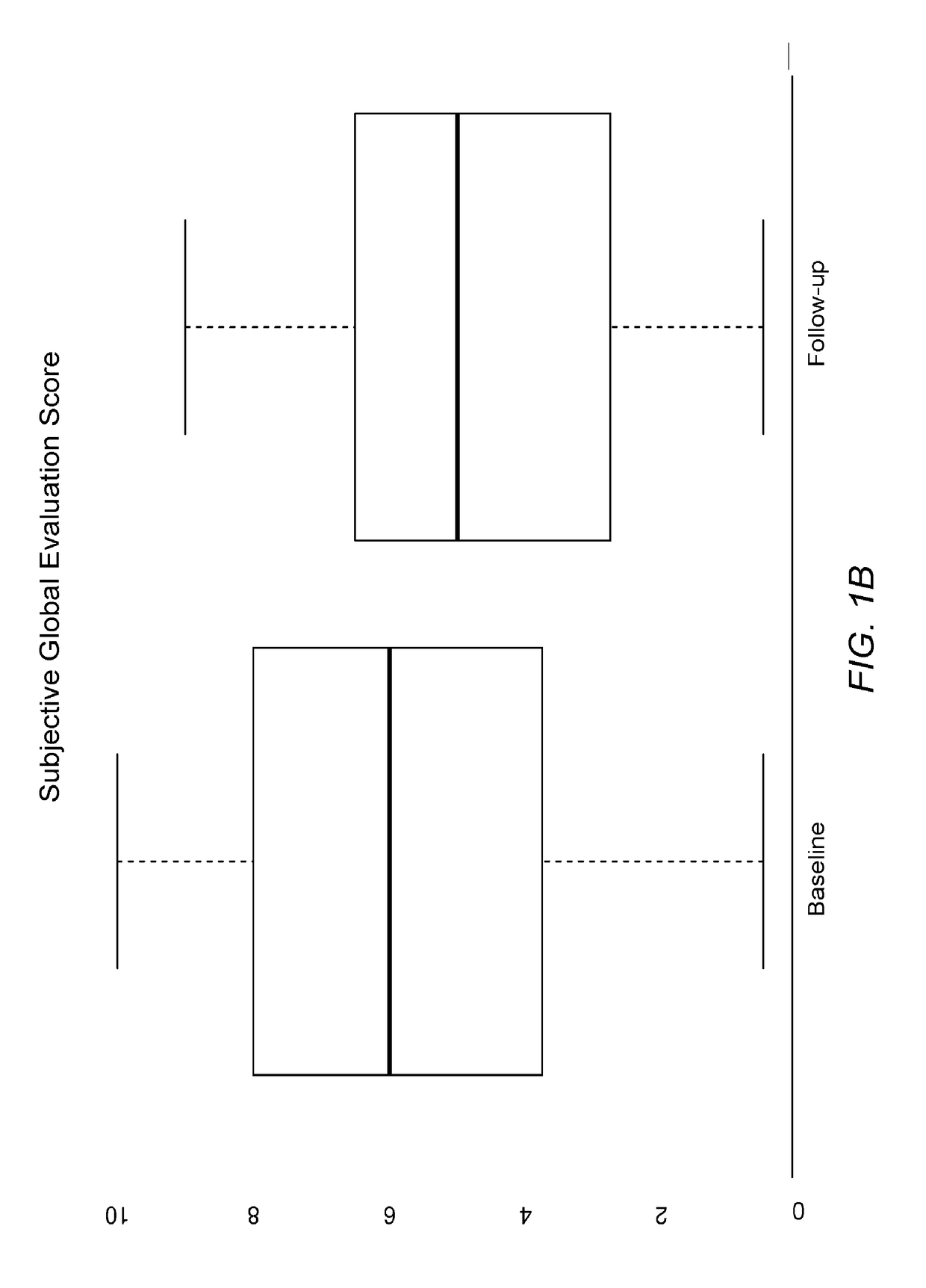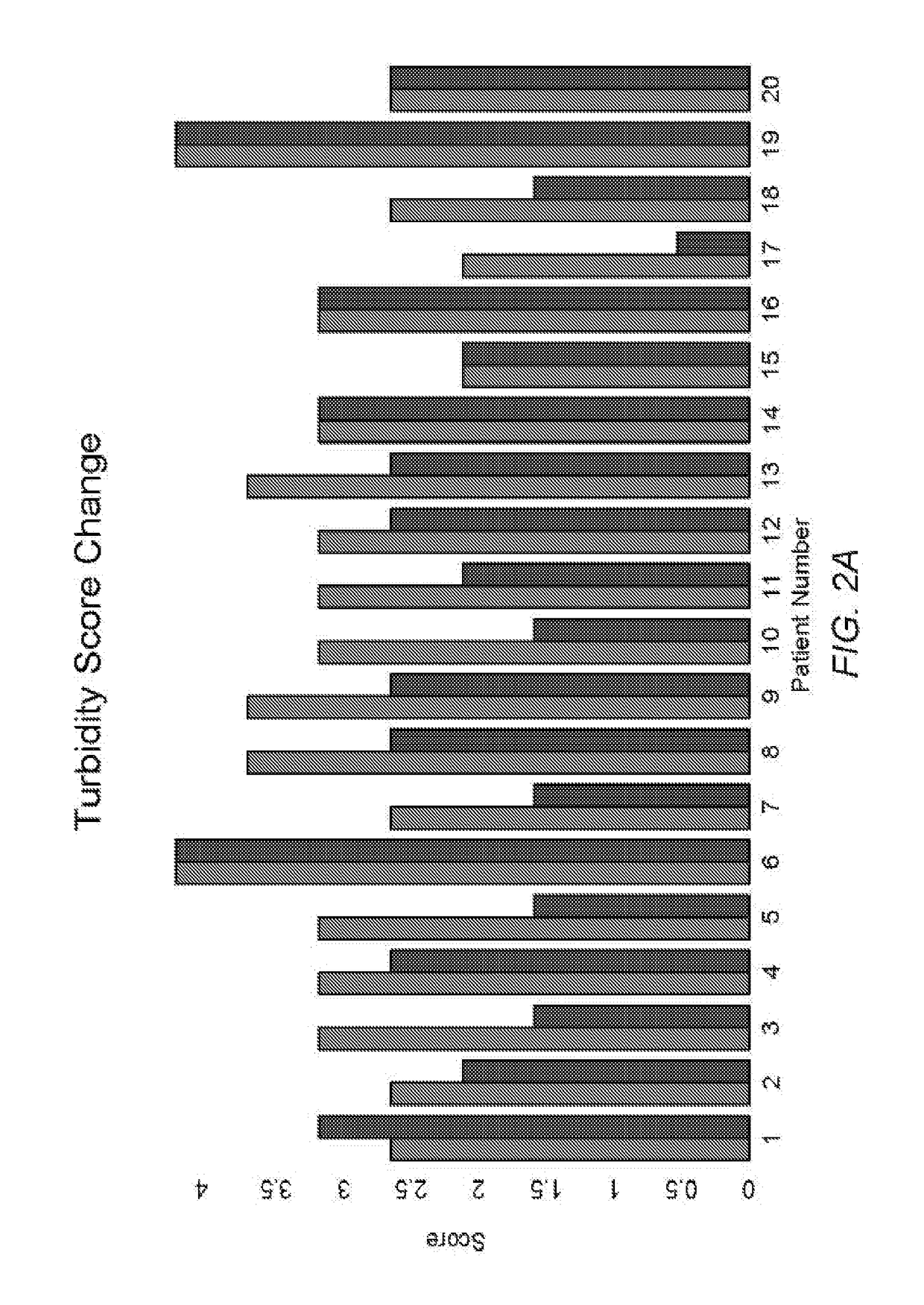Compositions and methods for treating ocular diseases
- Summary
- Abstract
- Description
- Claims
- Application Information
AI Technical Summary
Benefits of technology
Problems solved by technology
Method used
Image
Examples
example 1
on of the Composition
[0108]Materials:
[0109]Aldosterone Antagonist:
[0110]Spironolactone powder (0.001 to 0.01 g) (Letco Medical, Decatur, Ala., USA) or (PCCA, Houston, Tex., USA) (or an equivalent amount of eplerenone, canrenone, prorenone, and / or mexrenone, or combinations with spironolactone).
[0111]Carrier
[0112]Hypromellose—PF (preservative free 0.3% solution of Hypromellose without sodium chloride; buffered with sodium phosphate) (Prepared by Greenpark Pharmacy of Houston, Tex.).
[0113]Methods:
[0114]In a glass mortar with pestle, wet the spironolactone with drops of hypromellose (HPMC) until a paste is made. Preferably, the HPMC starting material for mixing with the aldosterone agent comprises from 0.01% to 5% HPMC, such as from 0.05% to 0.8%, or from 0.1% to 0.5%, or from 0.2% to 1%, or from 0.3% to 2%, or from 0.4% to 3%, or from 0.5% to 4%, and is preservative free. Continue to gradually add the hypromellose until a total amount of approximately 90% to 99.9% by weight of the tot...
example 2
ring the Composition to a Subject
[0115]A composition of Example 1 is administered to a number of subjects. The subjects are instructed to administer the composition of Example 1 to the eye up to four-times a day using ophthalmic drops for 1-4 weeks.
[0116]Results indicate that after two weeks of treatment using the composition of Example 1 as instructed, the subjects are reporting less redness, less irritation, less grittiness, and greater tolerance for their symptoms.
[0117]Quantitative results indicate that patients using the composition of Example 1 as instructed tend to have less conjunctival redness, improved obstruction of the meibomian glands, and / or improved turbidity of the glands. Quantitative results can be obtained using any vital staining technique, including for example lissamine green staining, rose Bengal staining, and / or sodium fluorescein staining. Such staining techniques can be used to identify and / or quantify a degree of epithelial cellular disruption, for example...
example 3
dy
[0118]Background:
[0119]Conventional treatments for dry eye syndrome have focused on addressing tear levels and inflammation, but have failed to demonstrate efficacy in all patients. New therapies have increasingly addressed meibomian gland dysfunction (MGD). Topical spironolactone is a drug with low toxicity and the potential to regulate and improve sebaceous gland meibum secretions through a variety of mechanisms.
[0120]Purpose:
[0121]The objective of this study was to investigate the effectiveness of topical spironolactone in treating MGD, a major component of dry eye syndrome.
[0122]Design:
[0123]Retrospective cohort study.
[0124]Methods Setting: Clinical Practice.
[0125]Patient Study Population: Twenty patients from November 2014 to February 2015 with moderate to severe meibomian gland disease were included in this study. The prescribing information included administering a composition to both eyes of the subjects 4 times per day as a topical drop for one month and then 2 times per ...
PUM
| Property | Measurement | Unit |
|---|---|---|
| Fraction | aaaaa | aaaaa |
| Fraction | aaaaa | aaaaa |
| Fraction | aaaaa | aaaaa |
Abstract
Description
Claims
Application Information
 Login to View More
Login to View More - R&D Engineer
- R&D Manager
- IP Professional
- Industry Leading Data Capabilities
- Powerful AI technology
- Patent DNA Extraction
Browse by: Latest US Patents, China's latest patents, Technical Efficacy Thesaurus, Application Domain, Technology Topic, Popular Technical Reports.
© 2024 PatSnap. All rights reserved.Legal|Privacy policy|Modern Slavery Act Transparency Statement|Sitemap|About US| Contact US: help@patsnap.com










